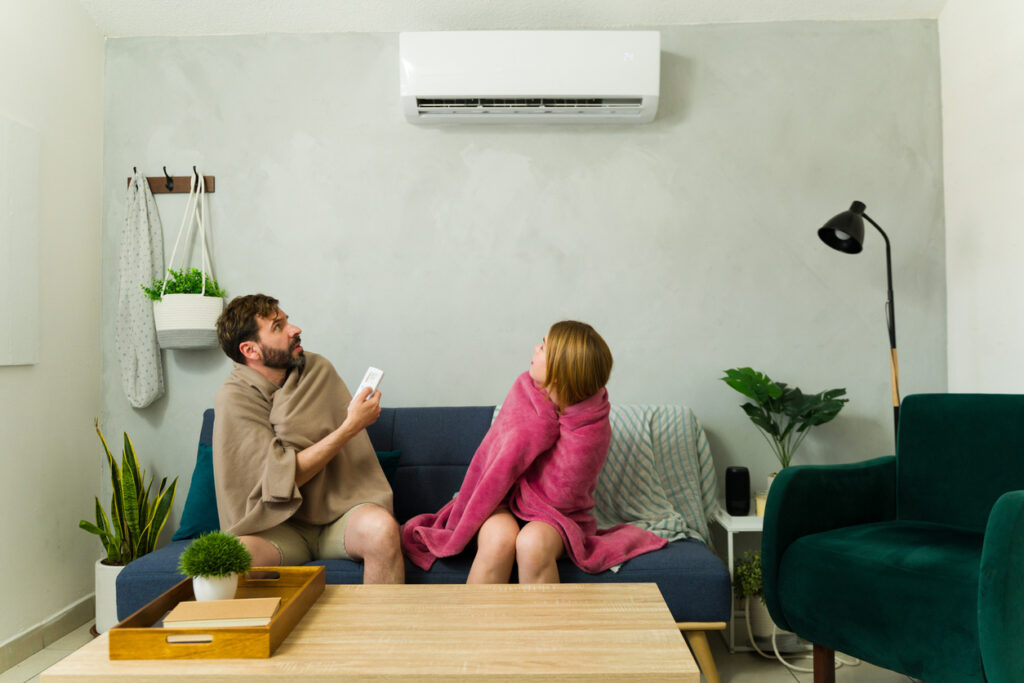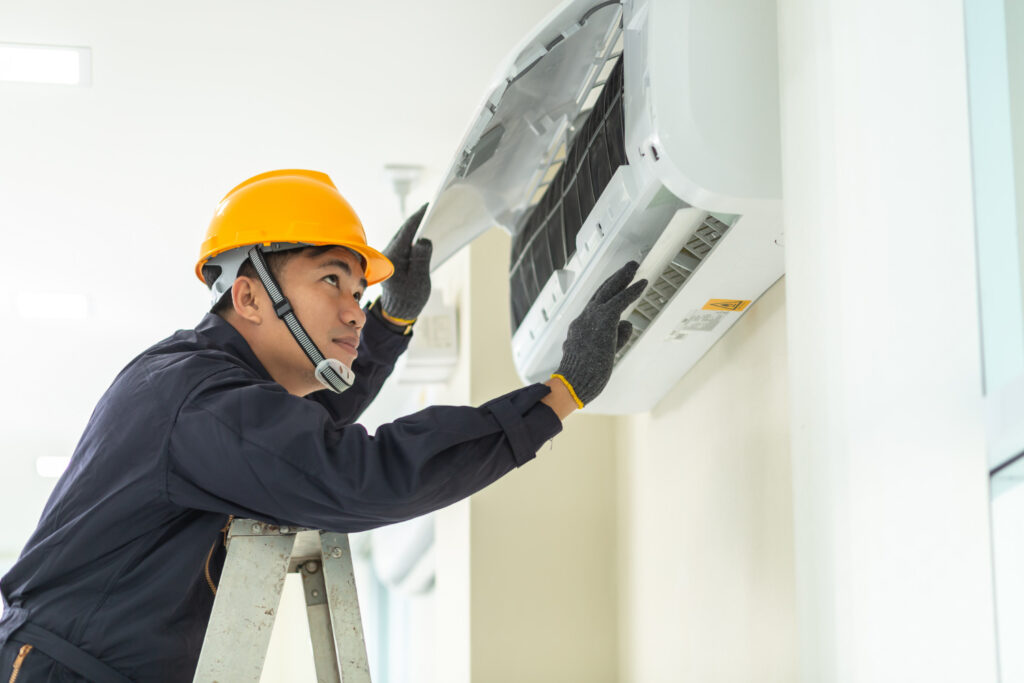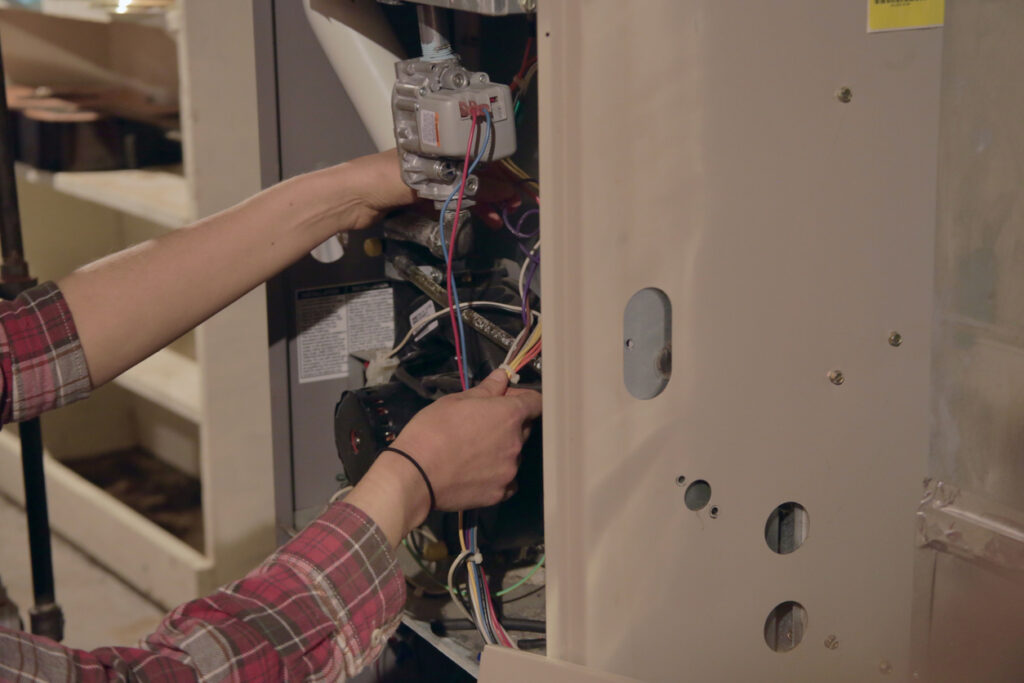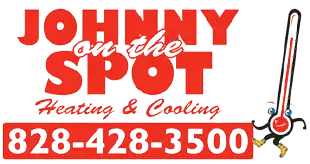
HVAC Troubleshooting Guide: Common Problems and Solutions for Effective Repair and Maintenance
A home comfort system acting up can really throw a wrench in your day and your budget, with about 23% of homeowners facing AC or heating troubles each year. This guide is packed with practical fixes for the most common HVAC headaches—from an AC that’s just not cooling to a furnace that refuses to light. We’ll walk you through simple DIY steps, explain what’s causing the issue, and tell you exactly when it’s time to call the pros at Johnny On The Spot Heating & Cooling. You’ll learn about:
- AC cooling failures, how to spot refrigerant leaks, and what to do about frozen coils
- Furnace ignition problems, fixing pilot lights, and troubleshooting electrical glitches
- General HVAC hiccups like thermostat quirks, blocked airflow, and clogged drain lines
- Essential preventative care, seasonal check-ups, and what the 2025 refrigerant changes mean for you
- When to call for service in Maiden, Lincolnton, and Hickory, NC, and what counts as an emergency
Get the know-how to recognize symptoms, understand the root causes, and perform fixes that get your system running smoothly and last longer.
Why Is My AC Not Cooling? Common Causes and Troubleshooting Steps
When your air conditioner isn’t cooling, it means something’s interfering with how it moves heat. Usually, it’s a problem with airflow, refrigerant levels, or a frozen coil. Think dirty filters, not enough refrigerant, or ice on the evaporator coils—all these things make it harder for your system to do its job, forcing the compressor to work overtime and driving up your energy bills. For instance, a clogged filter can choke off airflow by as much as 15%, leading to warm air coming from your vents even when the fan is running. Knowing these basics is key to figuring out what’s wrong and getting it fixed.
What Are the Symptoms of an AC Not Cooling Properly?

Start by looking for these clear signs that your AC isn’t keeping up:
- Warm air blowing from your vents, even though the fan is on
- The AC short cycling, meaning the compressor kicks on and off too quickly
- Noticeable humidity or condensation around your return air vents
- Your indoor temperature creeping up, despite what the thermostat says
These symptoms usually point to airflow issues or a system that’s just not transferring heat effectively, which means higher utility bills and less comfort. They’re direct clues to underlying component problems.
How Do Dirty Air Filters Affect AC Cooling Performance?
A dirty air filter is like a roadblock for air, making your evaporator coil work much harder and preventing it from absorbing heat properly. When airflow drops too low, the pressure around the coil decreases, causing the refrigerant temperature to plummet and moisture to freeze. This blockage can slash your cooling power by up to 25% and lead to that dreaded coil icing. Swapping out or cleaning your filters every 1–3 months is a simple fix that keeps your system running efficiently and cools your home effectively.
What Are the Signs of Refrigerant Leaks and How to Detect Them?
When your system is low on refrigerant, you might notice weaker airflow, hear hissing sounds near the outdoor unit, or see ice forming on the refrigerant lines. Keep an eye out for oily spots or frost on the copper tubing, or signs of corrosion around the service ports. To check for leaks, inspect the coil fins for frost patterns and listen for a faint hiss when the compressor is running. Using a pressure gauge can confirm low pressure, indicating that it’s time for a refrigerant top-off and leak repair.
How Can I Troubleshoot a Frozen Evaporator Coil?
Follow these safe steps to thaw out and get your coil working again:
- Power Off – Shut down your system at the circuit breaker to avoid any damage.
- Allow Thawing – Let the coil thaw on its own for about 30–60 minutes.
- Clean Filter – Swap out or clean your air filters to ensure maximum airflow.
- Inspect Drain – Check and clear out the condensate drain line to prevent water backup.
- Restart and Monitor – Turn your AC back on in fan-only mode and watch for normal airflow after about 10 minutes.
Often, these steps will get your cooling back on track. If the coil keeps freezing or airflow remains weak, it’s time for a professional to take a look.
When Should I Call a Professional for AC Repair in Maiden, NC?
It’s time to call in the experts for AC repair when your DIY efforts don’t bring back the cool air, if you suspect refrigerant leaks are still an issue, or if you start hearing strange noises from the compressor or blower motor. Johnny On The Spot Heating & Cooling offers fast local service, clear-cut diagnostics, and top-quality parts to get your comfort back reliably. Getting professional help quickly can prevent further damage and keep your system running at its best.
How to Troubleshoot Furnace Not Heating Issues: Causes and Solutions
When your furnace isn’t heating, it’s not just uncomfortable—it can be a safety concern too. Common culprits include ignition problems, blocked airflow, or electrical issues. For example, a tripped breaker can cut power to the ignition system, stopping the furnace from lighting. Understanding these connections helps you diagnose and fix heating failures more effectively.
What Are Common Symptoms of a Furnace Not Heating?

- Cold air blowing from your vents when you’ve set the thermostat to heat
- The furnace fan running, but there’s no flame or ignition
- Heating that cycles on and off erratically, or stops working altogether
- Error codes showing up on the furnace’s control panel
These signs usually point to issues with ignition, the fuel supply, or the electrical system, and each part needs a systematic check.
How to Fix Furnace Pilot Light and Ignition Problems?
If your pilot light or electronic igniter isn’t working, your gas furnace won’t light. Here’s how to tackle a pilot light issue:
- Check Gas Supply: Make sure the gas valve is turned on.
- Clean Pilot Assembly: Use compressed air to clear any debris from the pilot orifice.
- Relight Procedure: Follow your manufacturer’s instructions to hold the reset button and light the pilot.
For electronic igniters, you’ll need to clean them and test for voltage using a multimeter. Replacing a worn-out igniter often solves the problem and gets your furnace reliably lighting again.
What Causes Furnace Noises and How Can They Be Diagnosed?
Grinding, buzzing, or banging sounds usually mean something is worn out, loose, or there’s an airflow problem. A squealing blower belt might be misaligned or dry, while rattling could mean loose panels on the heat exchanger. Diagnosing involves checking the blower assembly, motor bearings, and heat exchanger supports. Fixing worn bearings or tightening loose panels will stop those annoying noises and prevent bigger issues down the road.
How Do Electrical Issues Affect Furnace Operation?
Electrical problems like tripped breakers, blown fuses, or corroded wiring can cut power to essential furnace parts. A limit switch that trips because of overheating might shut down the burner repeatedly. Using a multimeter to check continuity across the transformer, limit switch, and control board can help find breaks in the circuit. Fixing wiring issues and resetting breakers will restore stable furnace operation.
When Is Professional Furnace Repair Needed in Lincolnton and Hickory, NC?
You’ll need professional help if your furnace keeps failing to ignite, makes strange noises around the burner, or trips electrical breakers repeatedly. The skilled technicians at Johnny On The Spot Heating & Cooling provide thorough furnace diagnostics, safe gas line checks, and detailed electrical testing. With prompt local service and solutions focused on you, we ensure your home stays warm and comfortable all winter.
What Are the Most Common HVAC System Problems and How Can They Be Solved?
General HVAC issues can range from thermostat glitches and restricted airflow to clogged condensate lines. Each of these can mess with your comfort and system performance, but often, a simple fix is all that’s needed. Knowing the root cause and applying the right solution can get your system back in shape quickly and efficiently.
Here’s a quick look at common problems and their solutions:
| System Component | Common Problem | Solution |
|---|---|---|
| Thermostat | Not responding or showing incorrect readings | Replace batteries, recalibrate, or swap out the sensor |
| Air Ducts | Blocked or leaking sections | Clean ducts, seal any leaks with mastic |
| Condensate Drain Line | Clogged, causing water overflow | Flush with a vinegar solution |
| Electrical Controls | Tripped breakers or short circuits | Reset the breaker, tighten wiring connections |
| Blower Motor | Weak airflow or unusual noise | Clean the motor housing, lubricate bearings |
How Can Preventative Maintenance Improve HVAC Efficiency and Longevity?
Keeping up with regular maintenance ensures your HVAC system runs at its best, cuts down on the chances of breakdowns, and extends its lifespan. A thorough check-up can catch wear and tear before it becomes a major problem, keeping you comfortable and potentially saving you up to 15% on energy costs each year. HVAC maintenance plan
What Is Included in a Comprehensive HVAC Maintenance Checklist?
A complete maintenance routine involves changing filters, cleaning coils, lubricating moving parts, inspecting electrical connections, and calibrating the thermostat. Checking refrigerant levels and making sure the condensate drains properly also prevent hidden inefficiencies. This all-around approach protects every part of your system and keeps everything running in balance.
Why Is Regular Air Filter Replacement Important?
Clean air filters are vital for maintaining good airflow and protecting your blower motor from unnecessary strain. Filters with a MERV rating of 8–11 are great at trapping particles while still allowing plenty of air through. Replacing your filters every 1–3 months stops dust buildup, lowers energy use, and improves your indoor air quality, which is good for both your system and your health.
How Do Seasonal Tune-Ups Prevent Common HVAC Problems?
Seasonal tune-ups adjust your system for the current weather conditions (heating or cooling), check all safety controls, and verify your thermostat is accurate. They also involve recalibrating sensors and testing how the compressor starts up. By catching refrigerant leaks or motor wear early, these tune-ups help avoid emergency breakdowns and keep your comfort consistent.
What Energy Efficiency Tips Can Reduce HVAC Costs?
Boosting insulation, sealing up ductwork, and installing programmable thermostats can significantly reduce energy use by minimizing temperature swings and system cycling. Using ceiling fans along with your air conditioning helps circulate cool air more effectively. Even adjusting your thermostat by a single degree can cut energy consumption by up to 3%, showing how small changes can make a big difference.
How Will 2025 Refrigerant Changes Impact Your HVAC System?
With R-410A refrigerant being phased out starting January 1, 2025, HVAC systems will need to switch to alternatives with lower global warming potential, like R-454B or R-32. Older systems might need modifications or a complete overhaul of their refrigerant circuits. Planning for these upgrades now with a certified HVAC service ensures you’ll stay compliant, maintain your cooling power, and avoid service delays once the supply changes kick in.
When Should You Call an HVAC Technician for Repairs? Key Signs and Local Service Options
Major HVAC problems or anything that poses a safety risk should always be handled by a professional, not a DIY fix. Knowing when to call for help ensures you get timely service and prevents further damage or dangerous situations.
What HVAC Problems Require Immediate Professional Attention?
Emergency situations include smelling gas near your furnace, detecting electrical burning odors, hearing refrigerant hissing or seeing leaks, and your entire system shutting down during extreme weather. These issues present safety or environmental risks and require certified technicians to resolve them safely.
How Does Johnny On The Spot Heating & Cooling Provide Expert HVAC Repair in Maiden, NC?
We specialize in both residential and commercial HVAC services, offering 24/7 emergency response, clear diagnostics, and a customer-first approach. Our skilled technicians use advanced troubleshooting techniques and genuine replacement parts to get your system running reliably and efficiently, all backed by our local understanding of Maiden’s climate needs.
How to Schedule a Free Estimate or Emergency Service?
To get fast diagnostics or schedule maintenance, just contact the Johnny On The Spot Heating & Cooling dispatch team. We offer same-day appointments for your convenience. Our technicians arrive ready for a thorough inspection, will walk you through all your repair options clearly, and provide recommendations for preventative care that prioritize your comfort, safety, and budget.
How to Troubleshoot HVAC System Noises: Identifying and Fixing Strange Sounds
Unusual noises from your HVAC system often signal mechanical issues or airflow problems, and catching them early can prevent costly repairs. Whether it’s rattling, buzzing, or grinding, each sound points to a specific source that can be fixed with the right approach.
What Causes AC Rattling, Buzzing, or Grinding Noises?
Rattling usually comes from loose panels or debris in the condenser fan, while buzzing might mean a capacitor is failing or there’s turbulence in the refrigerant flow. Grinding often indicates worn-out motor bearings. Cleaning out debris, tightening panels, and replacing worn bearings or capacitors will restore quiet operation.
How to Diagnose Furnace Humming or Squealing Sounds?
A humming furnace could point to electrical issues with the transformer or control board, while a high-pitched squeal often means the blower belt is misaligned or needs lubrication. Testing voltage continuity and lubricating or adjusting the belt tension can quickly fix these persistent noises.
When Are Noises a Sign of Serious HVAC Problems?
Persistent banging or sounds of metal hitting metal could indicate a cracked heat exchanger or a failing blower assembly, both of which require immediate professional inspection. Continuing to run your system under these conditions risks further damage or safety hazards, making expert repair essential.
What Are the Signs of Refrigerant Leaks and How to Address Them Safely?
Refrigerant leaks not only reduce your system’s cooling efficiency but also pose environmental risks. Recognizing the signs of low refrigerant and understanding the proper professional repair procedures are key to safely containing leaks and restoring your system.
How to Detect Low Refrigerant Levels in Your AC System?
Key indicators include weaker cooling, longer run times for the system, and ice forming on the larger refrigerant line (the suction line). Pressure gauge readings below the manufacturer’s specifications confirm low refrigerant. You can also look for frost patterns on the coils and listen for hissing sounds near the service ports to help pinpoint leaks.
What Are the Environmental and Cost Implications of Refrigerant Leaks?
Leaking refrigerant contributes to greenhouse gas emissions and leads to higher energy bills because your system has to work harder. Under current regulations, handling and disposing of refrigerants like R-410A, which are being phased out, require certified recovery processes. Switching to approved alternatives helps you avoid regulatory fines and rising long-term costs.
How Can Professionals Repair Refrigerant Leaks and Upgrade Systems?
Certified technicians use tools like electronic leak detectors or UV dye to find leaks, repair damaged lines, and recharge systems to the exact factory specifications. When upgrading to newer refrigerants, they’ll replace compatible components—like compressors and seals—to ensure the system works correctly and meets new environmental standards.


 Schedule Service
Schedule Service